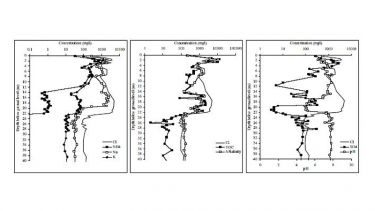Site-specific hydrogeological studies to improve the understanding of risk assessment models including LandSim: further studies at Burntstump landfill

This two year project, sponsored by the Environment Agency, examines the natural attenuation (NA) of landfill leachate in the unsaturated and saturated zone of the UK Permo-Triassic Sherwood Sandstone aquifer beneath a domestic waste landfill in Nottinghamshire.
Summary
NA is used in many older landfills without lining systems or leachate control measures to manage the polluting potential of leachate as it migrates through the subsurface.
Relatively little is known about NA processes for leachate in the unsaturated zone, particularly factors which control the extent and rates of attenuation for key contaminant groups.
Moreover, the effect of heterogeneity in leachate composition and aquifer properties on attenuation is poorly understood.
These data are used in risk assessment models for landfill development and management. However, uncertainty in the input parameters used in such models and relationships between measured descriptors of processes and the magnitude or rates of attenuation, means that predictions of contaminant fate in such settings can only be interpreted in a general way.
This project provides the opportunity to develop an improved fundamental understanding of NA processes for leachate in sandstone aquifers, relate attenuation capacity to leachate and aquifer properties and obtain appropriate parametric data for improved predictions of leachate migration in landfill risk assessments.
Project aims
- Validate existing hypotheses developed for NA of ammonium and organic compounds in the Sherwood
sandstone aquifer, with respect to heterogeneity in the unsaturated zone and leachate source term. - Determine the nature and extent of degradation of trace and other organic compounds.
- Improve understanding of the landfill declining source term that is used in current risk-assessment models.
- Provide improved data as input for predictive models used in risk assessment to validate the approach taken for representation of NA processes.
- Obtain data on the distribution and evolution of bulk and traces gases within and beneath the landfill.
Scientific approach
The distribution of contaminants in leachate between the aquifer pore water and matrix will be determined in continuous profiles obtained from cored boreholes drilled through the waste to the water table.
The physical and geochemical properties of the aquifer sediment will be related to pore water chemistry and interpreted using stable isotope techniques, supported by numerical modelling of the results.
The nature, rates and controls on magnitude of attenuation processes can be deduced by comparing these distributions to measured aquifer properties through predictive modelling.
Project partners
- University of Leeds
- Imperial College, London
- WRc plc

